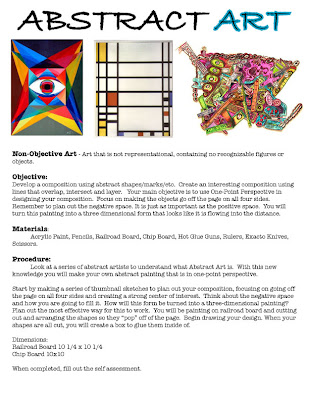 Collaboration
Collaboration in the Arts involves the interaction among others to create new and exciting works of art. The art isn't just the finished product, but it is the communication and sharing of ideas amongst others that is the true art form.
We are going to be collaborating with the other 3 Art 1 classes in H110. Our goal is to create a design that includes letters, texture and good design skills. Each participant will use stencils, colored pencils, rubbing sheets and a variety of papers to form a large scale design focused on the letters of the alphabet.
You will talk to your peers about color selection, placement of the letters, low or high relief (A
relief is a
sculptured artwork where a carved or modelled form is raised—or, in a
sunken-relief, lowered—from a
plane from which the main elements of the composition project), and overall good design skills.
Process:
1) Talk to your peers about what letters you are thinking about using.
2) What colors will the letters be and how large or small (scale)?
3) How will your letters show variety among them?
4) What textures are you drawn to?
5) Use tracing paper, copy paper, or sketch paper to make your letters.
6) Using the stencils and rubbing/texture plates draw letters.
7) Take your time and use good craftsmanship in the design.
8) Working with your classmates, take the letters and start placing them on the bulletin board.
9) Ask each other where the letters should go and what would make the design look the best.
10) How can you show Movement, Unity, and Rhythm when the letters are put together?
11) Could the letters come off of the wall somehow or be hung from the ceiling?
11) Work off of the additions of the other classes to make an overall great design.
The elements and principles of design you will focus on are:
ELEMENTS: Shape, Texture, Space
PRINCIPLES: Balance, Variety, Movement, Rhythm, Unity
Image taken from: http://www.flickr.com/photos/29397964@N05/3858754320










Bernd Ribbeck - “Ribbeck works with a timeless language that seems new, yet familiar, and operates outside of any historical specificity. A sense of space is suggested by the arrangement of shapes and forms on the picture plane, without the use of perspective as a device. Ribbeckʼs approach to materials and colour is sensitive and intuitive, scoring with a biro, sanding the surface and layering colour. The process remains visible, so we can consider how spiritual concerns may be materialised in art.”